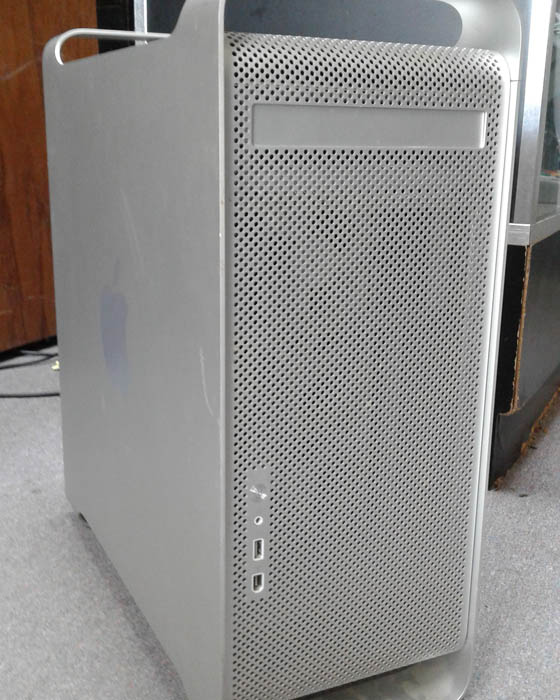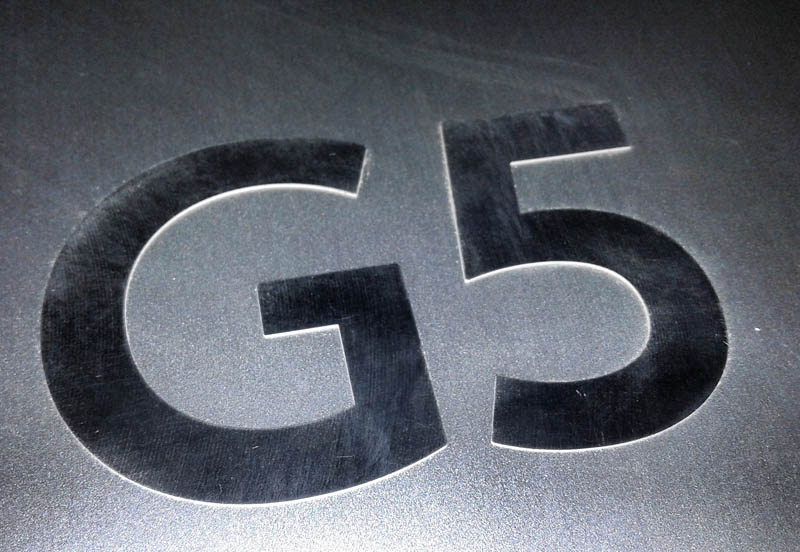As mentioned previously, as much as I am a Windows guy I’ve always had a fondness for the Macintosh computer family. A combination of having them in school as well as seeing the awesomeness to be found in the Power Mac G5 and the Mac Pro really made me want to get some of these machines if I had a chance to get them for a good price. The thing is, most Apple hardware maintains a decent value and without a good reason to buy one, it would just be an expensive toy, honestly, one that I couldn’t justify the purchase of. If a machine was, by a rare chance, given to me for free, however? Well, I’d have to take the offer, for sure.
That’s exactly what happened early June.
I got a text randomly one Saturday from a co-worker asking me if I knew anyone who “would be able to use an old G4 desktop tower.” Having watched plenty of videos on older Macintosh systems I knew exactly what he was talking about, and let him know I’d be interested.
I thought a G4 would be pretty cool. It’s nothing super special, but I’m not about to scoff at it. Perhaps it would be one of the older models I could run OS 9 on – that would be awesome. Or maybe one of the more sought after later units, like the “Mirrored Drive Door” model – those look pretty cool.
I double checked with him that it was a PowerPC G4 system – just in case there was another computer design that went by the “G4” name. He sent back a picture of the unit, along with telling me he just wanted it to go to a good home, rather than try to sell or trash it. I was happy to hear that, and even more happy to see the machine.
It wasn’t any model of G4. The photo had the familiar shape of the Mac Pro to it, which meant this was a Power Mac G5 unit – the top of the line in PowerPC based Macintosh systems.

This would be the G5 system in question. My power hungry beast of a machine…. for what it is, anyway.
Now, something to understand is there is a community of computer enthusiasts who love these old machines – many working far harder than they probably should to keep modern web browsers available for them and archive various programs which work for these aging, but still capable systems. While this used to be a much larger group in the early 2010’s it has, of course, slowly shrank as time has passed and Apple fully dropped all support for PowerPC code in any form with the release of MacOS 10.7. Still, there are groups who love these machines and enjoy using them for what they are, much the same way there are people out there who have custom MS DOS and Windows 98 computers for playing specific games. It’s similar with the vintage Mac scene, but quite different in numerous ways…
As you can imagine I was excited. Once my work day ended I rushed over to his place to pick up the unit and bring it home. Of course I set it up as quickly as I could, and once everything was ready, I pressed the power button.
Within a moment, the system was up and I was greeted with MacOs 10.5.8 – the last version to run on PowerPC based machines. I had a working system. It may be a little scuffed up, but damnit it works!

This happens to be the same as my model – the entire “G5” section is the heat sink! Yes, it takes up a quarter of the whole machine!
This is the point where I began researching the machines, trying to learn everything I could about them. I quickly learned a few things I didn’t enjoy hearing about – G5’s are apparently power hungry machines, and generate quite a bit of heat, and the liquid cooled models are prone to having issues.
Thankfully, mine wasn’t one of the water cooled models. I would discover my unit was a 2005 2Ghz dual-core model – one physical processor with 2 cores, and a massive air cooled heat sink. Awesome, I had one of the mid-range machines, but considering what other options are out there I’d say it’s probably the best model you could hope for given heat output and energy consumption – more on that in a future article, though.
I would also notice that my system didn’t have that distinctive Macintosh “bong” sound – officially known as the boot chime – when powered up. That sound is a part of the experience of owning one of these machines, and it was kind of annoying for it to not play upon booting the machine.
The unit worked, but this really bothered me, so I set myself on figuring out just why it didn’t make the sound on startup. There had to be a reason, and whatever that reason was I was hell bent on discovering it and resolving the issue.
This would become a crash course in learning just how quirky PowerPC based Macintosh’s can be…

A close up of that G5 logo because, why not?
